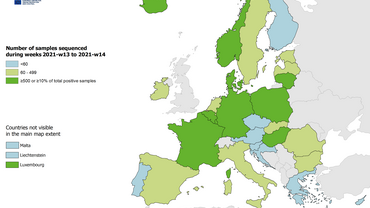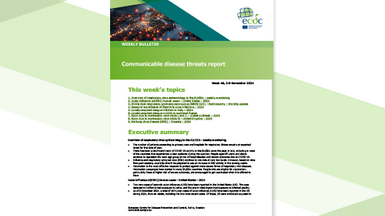SARS-CoV-2 variant mutations conferring reduced susceptibility to antiviral drugs and monoclonal antibodies: a non-systematic literature review for surveillance purposes
Antiviral drugs and monoclonal antibodies (mAbs), administered either separately or as combination therapy 'cocktails’, have provided a valuable tool for fighting COVID-19. Surveillance data, coupled with data on antiviral treatment susceptibility, can guide clinical decisions on selecting the best therapy for the patient.
Executive Summary
The aim of this report is to provide a non-systematic literature review on the currently available data on SARS-CoV-2 therapeutic mAbs and antiviral drugs authorised for use in the European Union/European Economic Area (EU/EEA). In total, 258 publications on the four approved mAbs and 23 publications on antiviral drugs were analysed. According to these studies, the ORF1ab mutations nsp5:S144A, nsp5:Q189K, nsp5:H172Y, nsp5:E166A, and nsp5:F140A conferred moderate to high reduction in susceptibility to Paxlovid (nirmatrelvir/ritonavir). The data indicated a highly reduced neutralisation capacity of Ronapreve (casirivimab/imdevimab) for all Omicron sub-lineages included in this report. The sub-lineages BA.1, BA.2, and BA.5 showed high reduction in susceptibility to Regkirona (regdanvimab). Xevudy (sotrovimab) showed high neutralisation efficacy against most SARS-CoV-2 variants, but moderate reduction in neutralisation activity for BA.2, BA.4, and BQ.1.1. Highly reduced neutralisation activity against the BQ.1 and BQ.1.1 sub-lineages was observed for Evusheld (tixagevimab/cilgavimab).
Monitoring the resistance of circulating new variants to mAb-based antiviral treatments is important for making decisions on whether some of the developed mAbs should be discontinued or different combinations of mAbs should be used. Neutralising susceptibility data are quite variable, leading to discordant findings among investigations. Therefore, adopting a global external standard for calibration would improve concordance across various tests and results could be provided in global units.








